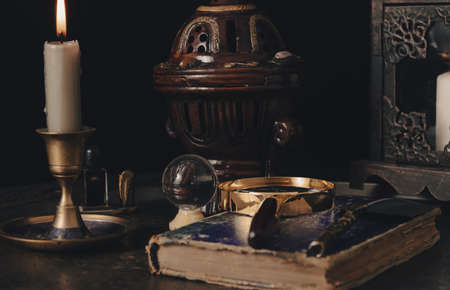Introduction: Dreaming in the British Imagination
From the enigmatic stones of Stonehenge standing sentinel on Salisbury Plain to the dimly lit parlours of Victorian spiritualists, dreams have long captured the British imagination. They are not merely fleeting nocturnal illusions; for centuries, dreams have been woven into the very fabric of British folklore and mysticism, regarded as portals to realms unseen and wisdom untapped. This fascination endures, tracing a line from ancient druidic rites through medieval legends to contemporary explorations of consciousness. But what is it about dreams that has so consistently enchanted people across Britain? Perhaps it is their liminal nature—existing between waking and sleeping, reality and fantasy—that invites both curiosity and reverence. In every era, from antiquity’s sacred groves to today’s modern mindfulness circles, dreams have offered a bridge: to the past, to other worlds, and sometimes even to truths hidden deep within ourselves. In this article, we delve into how dreams have shaped—and continue to shape—the mystical landscape of Britain, exploring why they remain a powerful touchstone for those seeking meaning beyond the everyday.
2. Stonehenge and Celtic Dream Lore
To unravel the profound connection between dreams and ancient British mysticism, we must journey back to the enigmatic world of the Druids and Celts. Sites like Stonehenge stand not only as architectural marvels but also as silent witnesses to rituals where dreams were seen as sacred conduits to other realms. Within Druidic tradition, dreams held a revered status—interpreted by spiritual leaders as messages from ancestors or omens guiding tribal decisions. The intertwining of landscape and dream was more than symbolic; it formed the very bedrock of their worldview. The table below highlights how key elements of Celtic dream lore relate to their mythic landscape:
| Element | Role in Dream Mysticism | Connection to Ancient Sites |
|---|---|---|
| Dream Incubation | Seeking prophetic visions through sleep rituals | Practised near sacred stone circles for heightened power |
| Ancestral Communication | Receiving guidance from forebears during dreams | Bones of ancestors often buried near monuments like Stonehenge |
| Nature Spirits (Aos Sí) | Belief that spirits reveal themselves through dreams | Stone alignments thought to attract these beings at liminal times |
The landscape itself—rolling mists, ancient yews, and mysterious standing stones—was believed to blur the boundaries between waking life and the dreamworld. Stonehenge, shrouded in astronomical mystery, became an axis mundi where time, space, and consciousness converged. It is perhaps no surprise that many modern British tales still echo with references to dream journeys and visionary experiences linked to these ancient places. This enduring fascination is a testament to how deeply dreams are woven into the fabric of British folklore and spiritual identity.

3. Mediaeval Visions and the Royal Road to the Soul
In the tapestry of British history, the Middle Ages stand as a remarkable era when dreams were meticulously documented and deeply respected, both within the cloisters of monasteries and the chambers of monarchs. Medieval chronicles brim with accounts of dream-visions—referred to as “visio”—often penned by monks who believed such nocturnal experiences could bridge the earthly and divine. These records, preserved in illuminated manuscripts, reveal not only personal revelations but also collective anxieties and hopes, with dreams regularly interpreted as messages from God or omens foretelling national events.
The Scriptorium: Monks as Dream Chroniclers
Monastic life in medieval Britain was steeped in spiritual discipline, and it’s no surprise that monks often considered dreams as windows to the soul. In abbeys scattered from Northumberland to Somerset, scribes diligently transcribed visions experienced by themselves or reported by laypeople. Such documentation wasn’t merely anecdotal; it served as a form of spiritual guidance for the community. The venerable Bede, for instance, detailed several visions in his “Ecclesiastical History,” treating dreams as signposts on the journey towards salvation.
Royal Slumbers: Prophetic Nightmares and Power
Meanwhile, within royal courts, dreams took on political gravity. Kings and queens sought counsel from seers and clergy to interpret troubling night-visions. The infamous story of King Henry II’s recurring nightmares about Thomas Becket’s martyrdom became part of royal lore—a potent mix of guilt, prophecy, and power. Dreams might sway decisions at court or even influence military campaigns; their interpretations could reinforce a ruler’s legitimacy or warn of impending danger.
Spiritualism Before Its Time
This medieval preoccupation with dreams laid the groundwork for later British spiritualist movements. The belief that dreams offered access to hidden truths resonated across centuries, shaping mystical thought long before séances became fashionable in Victorian parlours. Whether inscribed in Latin on vellum or whispered in candle-lit halls, medieval British dream narratives reveal an enduring conviction: that sleep is not merely rest, but a sacred passageway—the royal road to the soul itself.
4. Folklore, Fairies and the Sleeper’s Journey
The British Isles are a patchwork of dream-laden tales, where sleep is not just a respite but a portal to the otherworld. Across counties and centuries, dream motifs shimmer through fairy lore and local legends, each region weaving its own tapestry of supernatural encounters that blend the ordinary with the extraordinary.
The Fairy Dreamscape: A Cultural Tapestry
British fairy tales are often populated by slumbering protagonists whose dreams blur the line between reality and enchantment. In Cornish folklore, for example, those who fall asleep on ancient barrows or at “fairy rings” are said to be whisked away by the “Piskies,” returning with cryptic prophecies or strange marks upon their skin. Similarly, Scottish Highlanders speak of dream meetings with the “Sìth”—elusive fairy folk—who reveal hidden knowledge or lure humans into their mystical realms. These dream journeys were never merely fanciful; they functioned as warnings, lessons, and sometimes blessings within local communities.
Regional Legends: Mapping Dream Encounters
| Region | Supernatural Being | Dream Motif | Local Significance |
|---|---|---|---|
| Cornwall | Piskies (Fairy Folk) | Sleeping on ancient sites triggers fairy abduction; return with riddles or gifts. | Explains sudden changes in fortune or odd behaviour. |
| Scotland (Highlands) | Sìth (Faeries) | Dreams as gateways to faerie hills; prophecies and warnings delivered in sleep. | Mediates between human world and faerie domain. |
| Lancashire | Boggarts | Nightmares blamed on mischievous spirits; sleepers awaken confused or frightened. | Used to caution children against wandering at night. |
| Wales | Tylwyth Teg (Fair Folk) | Dream dances under moonlight; return with time lost or altered memories. | Cultural explanation for disappearances or memory lapses. |
Folklore’s Enduring Influence
These motifs endure in British culture not only as quaint stories but as frameworks for understanding the mysterious workings of mind and fate. The sleeper’s journey—whether blessed by faeries or bedevilled by boggarts—reflects a collective fascination with dreams as liminal spaces, where ordinary Britons might glimpse wonders or warnings from beyond. Even today, such legends echo in contemporary spiritualism and pop culture, reminding us that in Britain, dreams have always belonged to both the bedchamber and the borderlands of myth.
5. Victorian Spiritualism: Dreams as Messages from Beyond
The Victorian era in Britain was a time of remarkable fascination with the unseen and the otherworldly, marked by an obsession with spiritualism and the quest to pierce the veil separating the living from the dead. Parlours up and down the country buzzed with tales of séances, table-turning, and ghostly apparitions—rituals that brought together people from every social stratum in search of communion with spirits. In this cultural milieu, dreams emerged as potent vehicles for supernatural contact, imbued with both personal meaning and collective wonder.
The Séance and the Slumber
Victorian spiritualists often regarded sleep not merely as a biological necessity but as a liminal state—a threshold between worlds. Mediums would recount dream encounters with departed loved ones or spirit guides, interpreting these nocturnal visions as direct communications from beyond the grave. Newspapers and penny dreadfuls were replete with stories of prophetic dreams, where the dearly departed imparted warnings or comfort to those left behind. For many Britons, the boundary between dreamscape and séance table was tantalisingly thin.
Dream Diaries and Psychic Experiments
Across drawing rooms lit by gaslight, it became fashionable for Victorians to keep detailed dream diaries alongside their Bibles and volumes of Tennyson. Spiritualist circles encouraged participants to record their dreams meticulously, believing that repeated symbols or messages might offer evidence of ongoing dialogue with spirits. Some even attempted psychic experiments: before sleep, they would pose questions to the spirit world, hoping to receive answers through their dreams by morning’s light.
Scepticism Meets Spiritual Longing
Of course, not everyone was convinced. The rise of scientific rationalism saw sceptics like Charles Dickens lampooning spiritualist excesses, while others dismissed dream revelations as mere fancy or subconscious wish-fulfilment. Yet even in the shadow of doubt, the Victorians’ yearning for connection—to ancestors, lost friends, or some greater cosmic order—found expression in their reverence for dreams as mystical missives from realms unseen.
Thus, within the candlelit parlours and misty moors of 19th-century Britain, dreams were elevated far beyond idle nocturnal wanderings. They became powerful conduits for hope, healing, and the eternal human desire to bridge worlds—a legacy that continues to haunt British folklore and mysticism to this day.
6. Modern Mysticism: Dreams in Contemporary British Life
Today, the British fascination with dreams has not faded—it has simply evolved, weaving its way through the fabric of contemporary culture and urban life. From the bustling high streets of London to the quiet lanes of Yorkshire, dreams remain a topic that both intrigues and inspires. While ancient stone circles like Stonehenge remind us of Britain’s mystical past, the interpretation of dreams now finds a home in unexpected places: late-night radio call-ins, best-selling novels, and even television dramas that flirt with the supernatural.
The Urban Legend Renaissance
Urban myths have always held a special place in British storytelling, and many of these tales are dream-inspired. Stories circulate of prophetic visions on the London Underground or spectral warnings received in sleep before significant real-world events. These modern legends echo older folk beliefs, yet they’re reframed for a digital age—shared on social media or retold over a pint at the local pub.
Pop Culture’s Dreamscapes
The influence of dreams is palpable in British pop culture. Television series like “Doctor Who” and “Black Mirror” play with dream logic and alternate realities, blurring the lines between waking life and sleep. Musicians from The Beatles to Kate Bush have famously drawn inspiration from their dreams, crafting songs that resonate with a dreamy surrealism unique to British creativity. Even fashion designers and visual artists tap into dream symbolism, infusing their work with an ethereal touch that nods to Britain’s mystical heritage.
Spiritual Movements and Personal Meaning
Amid this cultural backdrop, modern British spiritual movements continue to place value on dreaming as a tool for self-discovery. Whether it’s within eclectic circles exploring lucid dreaming or mindfulness groups reflecting on nightly visions, there’s an ongoing dialogue about what dreams reveal about our inner lives. Some seek meaning through Jungian dream analysis; others attend workshops or retreats aiming to harness the wisdom of their subconscious. The legacy of British mysticism lives on—not just in ancient sites or dusty folklore books, but in daily conversations about hope, anxiety, transformation, and personal growth.
In essence, dreams remain a vital thread in the ever-evolving tapestry of British culture. They connect past to present, folklore to futurism—reminding us that the mysteries glimpsed in sleep are as relevant on today’s rain-slicked pavements as they were beneath ancient standing stones.


